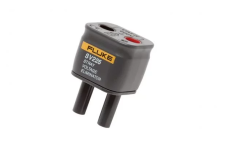Thanks for the added information. That gives us a clearer picture.
Ron (Hi Ron) has you well advised on the "trickier triacs" and what to expect when placing meter probes across them.
Just a further reiteration of something I mentioned earlier...
HoldenC said:
The original output has went bad. Im assuming that the horn that was attached caused damage to the output. Only about have of the I/O is fused here. Big problem, I know. The horn was found to be full of mud, so it may have pulled higher amps than normal trying to make a sound...
As I mentioned, to further protect PLC outputs which may be controlling relatively higher loads, it is good practice to have the outputs switch an interposing relay of a relatively lower load. The relay's contacts then indirectly switch the heavier load, such as an inductive load horn. This way, the output is only ever subjected to the lower current required to energize the relay's coil. The other advantage is that the wiring for the output is contained within the PLC enclosure and is therefore not exposed to potential external faults, such as catastrophic device failures, short circuits or cross voltages due to cable damage, voltage drops, and anything else possible "out in the field".
If the field device does irreversibly damage the interposing relay contact then only the relatively cheaper relay need be replaced and much more quickly, rather than having a now damaged, unusable single output channel, or sometimes more expensive complete module failure.
Of course, if not using interposing relays, then adequate fusing of directly wired output field devices really should be done as a standard practice, else you run the risks.
It is also good practice to not only add suppression to the interposing relay contacts for arc protection against the higher field load, but to also add suppression to the relay's coil to suppress potential arcing at the coil which may degrade the output's contacts.
All in the ideal world of course. But, with the mention of mud getting into this particular horn, I would strongly consider retrofitting an interposing relay, or at minimum a fuse, to protect that now at similar risk replacement output channel.
Regards,
George





